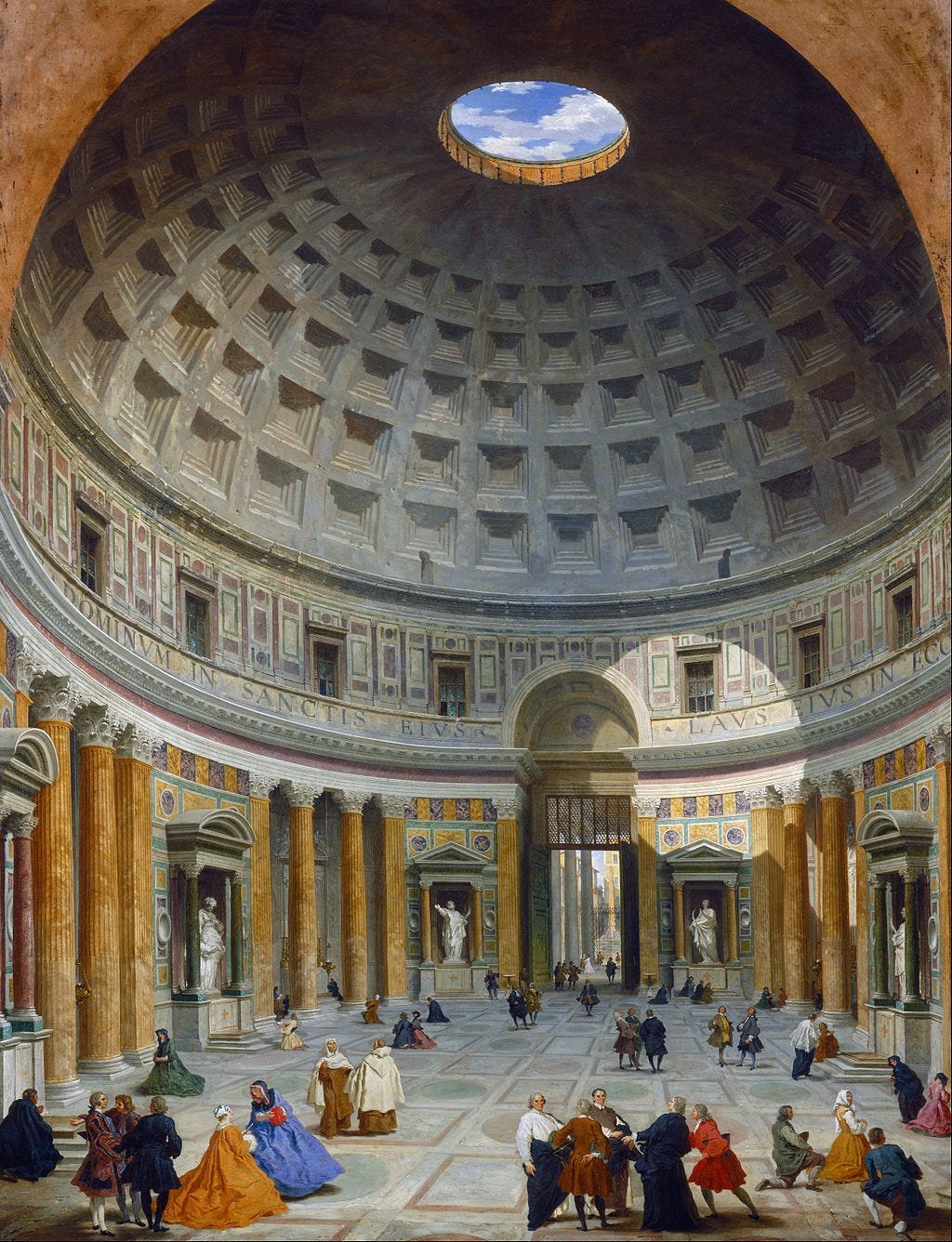Pantheon, Rome 🇮🇹
Exterior of Pantheon by @gabiontheroad - Unsplash
In the golden age of Roman History, the Pantheon (meaning all the gods) was not a temple to worship the pagan gods as previously thought.
The reigning theory suggests that it was built to reinforce the living Emperor’s god-like status. Originally built in ~25 BC by Marcus Agrippa to honor (soon-to-be) Emperor Augustus and his victory over Mark Antony & Cleopatra. It would be a place for Emperor Augustus to appear god-like in a backdrop amongst the pagan gods and previous deified rulers (Julius Caesar).
The Pantheon was built on a sacred site believed to be the location where Romulus (Rome’s mythic founder) rose to the heavens.
This first building burned down in 80 AD and was rebuilt by Emperor Domitian. The second Pantheon was struck by lightning in 110 AD. The building you see today was reconstructed by Emperor Trajan and completed by Emperor Hadrian in 126 AD.
But part of the original front facade remains.
On the front facade you’ll see M·AGRIPPA·L·F·COS·TERTIVM·FECIT a latin inscription that translates to 'Marcus Agrippa, son of Lucius, made this when consul for the third time'.
The interior of the Pantheon in the 18th century, painted by Giovanni Paolo Panini.
The Pantheon is the world’s largest unreinforced concrete dome measuring 142ft (43m) in diameter.
On midday on the founding date of Rome (April 21) sunlight hits above the front door flooding the entryway with light. The oculus, known as the Eye of the Pantheon, a 27ft (8m) wide opening is completely open to the elements and the sun’s rays move across the original marble floor and up the walls like a sundial.
One of the best preserved sites in Ancient Rome it has been in continued use for nearly two millennia.
In large part thanks to the Byzantine Emperor gifting the Pantheon to the Pope in 609 AD and it being converted to a catholic church that is still in use today. Today the Pantheon is home to the tombs of famous Italians including Renaissance painter Raphael, and several Italian Kings and poets.
Incredibly preserved, the Pantheon is a pinnacle of Roman glory.


